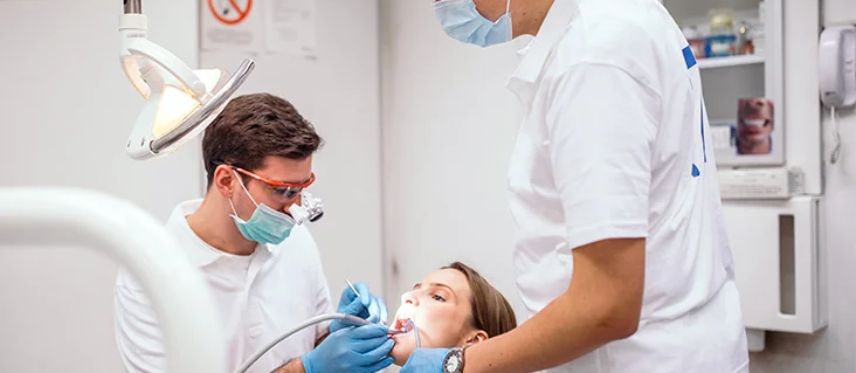After Care Instructions for Fillings

During a filling procedure, it’s common for the area where the filling is placed to feel numb. This is because a local anesthetic was used during the procedure. After a few hours, you shouldn’t feel anything anymore.
You may notice some sensitivity or discomfort in the treated tooth when the numbness wears off, especially while eating or drinking hot or cold foods and beverages. This hypersensitivity, too, should fade away after a week or so.
Your dentist may advise you to avoid chewing on hard or sticky foods for a while, to take pain medication as recommended, or to brush and floss carefully around the treated tooth.
Contact your dentist immediately if you have any unexpected or persistent pain, swelling, or other symptoms after obtaining a filling. This could be a sign of a problem or infection.
Visit your dentist at Garden Valley Family & Cosmetic Dentistry regularly. Set up regular dental appointments with your dentist to keep an eye on your fillings and catch any problems as soon as possible.
After Care Instructions for Fillings

After getting tooth-colored crowns or fillings, you need to take good care of your teeth to ensure they heal properly and avoid problems. The following are some recommendations for maintaining tooth-colored restorations:
- Within the first hour after receiving the repair, don’t eat or drink anything. The restoration can then be correctly set.
- In the days following tooth restoration, it is important to be cautious when biting and chewing with the treated tooth. Softer foods may be more comfortable to eat at this time.
- Keep up with your regular oral hygiene routine, but be extra careful for the first few days around the new tooth. Using a toothbrush with extra-gentle bristles is always a good idea.
- For the first few days after your repair, try to avoid anything too hot or too cold. A restored tooth is less likely to be sensitive or painful if this is done.
- The tooth can be treated with over-the-counter pain medicines such as ibuprofen or acetaminophen if it becomes painful or sensitive after restoration.
How should fillings in teeth be taken care of?
If your teeth are worn, decaying, or broken, there is a good chance that you will need a dental filling. Many different types of filling materials can be used to fix a broken tooth and make it function normally again.
If you want your restored tooth to last a long time, you should familiarize yourself with aftercare instructions for dental fillings before your procedure. If you want to find out more, read on!
Feel discomfort and sensitivity.

Dental fillings can cause pain and sensitivity thereafter. This is normal. The newly filled tooth usually indicates nearby teeth! The ache will subside.
Heat and cold sensitivity might last up to three weeks. Sensitive-tooth toothpaste can help. Avoid hot and cold foods for a while.
High dental fillings may cause pain. Dr. Rhea Antolin can smooth or reshape it. Throbbing and pain may indicate extensive deterioration that requires a root canal.
Maintain a healthy diet.

After getting a dental filling, you must take steps to avoid decay under, around, and on neighboring teeth.
Hence, minimizing sugary meals and drinks is crucial to maintaining a healthy diet. Bacteria in your mouth break down sugar into acid, which can cause tooth decay.
Moreover, avoid hard meals like ice, candy, and others. They can put a strain on your tooth filling, causing it to crack or fall out.
Depending on your filling, you can eat thereafter. The blue light hardens composite white fillings. You can eat and drink following the surgery.
It’s important to brush your teeth twice a day.

Our dental hygiene routine can keep your teeth, gums, and fillings healthy. This involves brushing twice a day and treating your tooth filling like your natural teeth.
Brushing properly removes plaque and bacteria from the teeth and gums. Plaque can cause cavities, tooth decay, and periodontal disease if left unchecked.
Always brush for two minutes. Hence, you can ensure adequate tooth care. A small-headed, soft-bristled toothbrush can reach all parts of your mouth.
Replace your toothbrush every 3–4 months, or when it wears out. Fluoride toothpaste prolongs dental fillings.
Depending on your filling, you can eat thereafter. The blue light hardens composite white fillings. You can eat and drink following the surgery.
Use dental floss on a consistent basis.

Daily flossing is essential because it can remove plaque and food particles from areas your toothbrush can’t reach. To reap the benefits of flossing, it’s important to do so correctly. If you want to learn how to properly floss your teeth, go here.
When you floss first thing in the morning, you give yourself the best chance of getting rid of any food debris that could have been displaced while you were flossing. One time every day, preferably in the morning or right before bed, is ideal.
Make sure you visit the dentist regularly.

If you want your fillings to last as long as possible and for any problems to be fixed before they get worse, you need to go to the dentist regularly. Having a peek into your filling in this way allows them to see whether there is any damage. A filling will need to be replaced at some point, and your dentist may let you know when that time comes.
By keeping up with your regular dental exams and cleanings, you can avoid needing fillings in the future.

